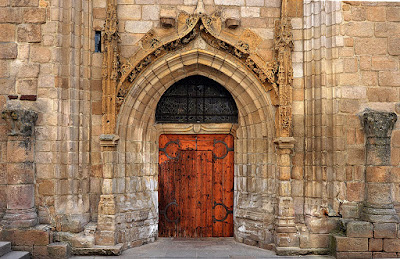The Importance of Lintels in Construction
In case you
are wondering, the lintel is a type of beam supporting the structures above
openings such as windows, doors, cupboards etc.
Two main Importance of Lintels:
I. The primary function of the lintel is to distribute the weight of the
above structures on the side walls.
II. It also serves as a decorative element in many masonry designs.
Classification of Lintels:
Wooden lintels - these are used on
areas with an abundant supply of lumber and the oldest type.
Wooden
lintels are rarely used now because it's costly, may catch fire easily, decay
and susceptible to termites.
Commonly
used wooden lintels are teak and rosewood.
Stone lintels - sturdier than wooden lintels
and commonly used on stone masonry structures.
Stone
lintels are not commonly used today due to:
costly for
quarrying
cannot
withstand transverse stresses
transport,
dressing and handling is difficult due to its weight
Brick lintels - generally made up of
hard, well- burnt, free of defects such as lumps and cracks are used on small
openings (less than a meter) with a lighter load.
Bricks on
end, on edge or course horizontal, are its usual forms laid over openings.
Bricks with frogs filled with mortar provide better resistance at joints than
regular bricks.
Reinforced brick lintels - same as
brick lintels but reinforced with steel bars in the middle.
This lintel
covers a wider area. The spaces in between are covered with cement or concrete
mortar.
Not
recommended on areas with lots of rain or humidity since it erodes the
material.
Concrete lintels - the most widely used
lintel in today's construction. The material used is cement concrete.
Two types:
·
Plain
concrete - prepared with pure concrete. They are not useful for heavy
loads. Used for a span of only one meter. Strong in compression and weak in
tension forces.
·
Reinforced
concrete - also known as RCC, is the best type of lintel to use. It is
durable, strong, and fire resistant.
Reinforced with
a steel bar in the middle, RCC can be used in wider spans of construction.
Pre-cast RCC is used if speed is needed in development.
Steel lintels - when the depth of a
lintel is restricted on a large span, engineers
usually use steel lintels. These lintels can support heavy loads such as
used on storefronts, bay windows and areas with smaller but more massive load.
Though very good in compressive and tensile strength better than RCC, steel has
some disadvantages.
o
Concrete usually stops the spread of fire;
that's why RCC is used in areas where heat is present. Steel lintels can lose
its integrity when exposed to extreme heat and therefore dangerous for it will
lose its weight bearing capacity.
o
Cold bridging is also to consider when using
steel lintels. Concrete can reduce cold bridging and is a better insulator than
steel.
o
Steel can corrode easily whenever moisture and
certain chemicals are present. Some steel also reacts to sea salt, but
stainless steel can be a good option when used in these areas.
o
The cost is also a determinant when looking for
lintels. Concrete is generally much more affordable than steel; that's why this
is the most commonly used in construction.
VIDEO PRESENTATION
FIND US ON
https://www.galintel.com.au/
|







No comments:
Post a Comment